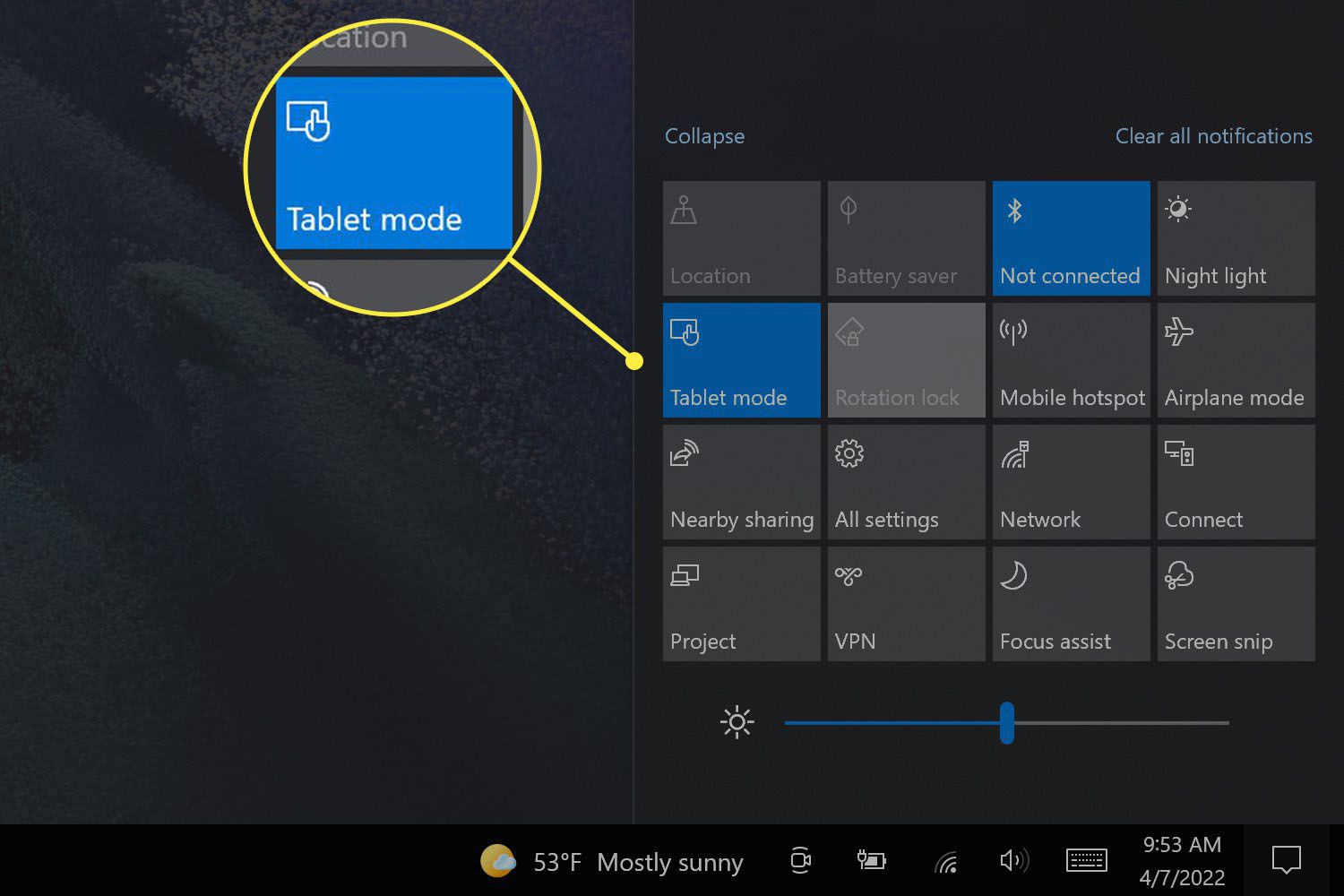
In the dynamic landscape of computing, versatility is key. With the evolution of devices, from traditional desktops and laptops to tablets and 2-in-1 hybrids, operating systems like Windows 10 have adapted to accommodate various form factors and user preferences. Tablet Mode in Windows 10 is one such feature designed to optimize the user experience for touch-centric devices, offering a more intuitive and streamlined interface tailored for tablet usage. In this exhaustive guide, we’ll explore the intricacies of enabling or disabling Tablet Mode in Windows 10, understanding its benefits, customization options, and how it enhances the user experience on touch-enabled devices.
Understanding Tablet Mode in Windows 10: Tablet Mode is a feature in Windows 10 that transforms the user interface to be more touch-friendly and immersive, catering to devices like tablets, 2-in-1 hybrids, and touchscreen laptops. When Tablet Mode is enabled, the Start menu expands to full screen, apps open in full-screen mode by default, and the taskbar icons are spaced out for easier touch interaction. Tablet Mode also activates features like the on-screen keyboard and gesture controls, enhancing the touch experience on compatible devices.
Enabling Tablet Mode in Windows 10: Enabling Tablet Mode in Windows 10 is a straightforward process that can be done through the Settings app or the Action Center. Here’s how to enable Tablet Mode:
- Using the Settings App:
- Open the Settings app by clicking on the Start menu and selecting the gear icon.
- In the Settings app, click on “System.”
- Select “Tablet” from the left sidebar.
- Toggle the switch under “Make Windows more touch-friendly when using your device as a tablet” to enable Tablet Mode.
- Using the Action Center:
- Swipe in from the right edge of the screen (or select the Action Center icon in the taskbar).
- In the Action Center, click on the “Tablet mode” button to toggle Tablet Mode on or off.
Benefits of Tablet Mode: Tablet Mode offers several benefits for users on touch-enabled devices, including:
- Optimized Touch Experience: Tablet Mode provides a touch-friendly interface with larger icons, spaced-out taskbar buttons, and an expanded Start menu, making it easier to navigate and interact with apps using touch gestures.
- Enhanced Productivity: By utilizing the full screen for apps and reducing clutter, Tablet Mode enhances productivity for tasks like web browsing, document editing, and media consumption on touch-enabled devices.
- Seamless Transition: With the ability to switch between Tablet Mode and Desktop Mode seamlessly, users can adapt their device’s interface to suit their current usage scenario, whether it’s traditional desktop computing or on-the-go tablet usage.
Customizing Tablet Mode Settings: Windows 10 offers various customization options for Tablet Mode, allowing users to tailor their touch experience to their preferences. Some customization options include:
- Automatically switch to Tablet Mode: Choose whether Windows 10 should automatically switch to Tablet Mode when you detach a keyboard or flip a convertible device into tablet mode.
- Hide app icons on the taskbar: Decide whether app icons should be hidden on the taskbar in Tablet Mode to reduce clutter and focus on the task at hand.
- Choose which mode to use for specific apps: Customize whether individual apps should open in Tablet Mode or Desktop Mode by default.
Disabling Tablet Mode in Windows 10: If you prefer to use your device in Desktop Mode, you can easily disable Tablet Mode in Windows 10. Here’s how to do it:
- Follow the same steps outlined above to access Tablet Mode settings.
- Toggle the switch under “Make Windows more touch-friendly when using your device as a tablet” to disable Tablet Mode.
- Alternatively, you can toggle Tablet Mode off from the Action Center by clicking on the “Tablet mode” button.
Conclusion: In conclusion, Tablet Mode in Windows 10 offers a touch-friendly interface optimized for devices like tablets, 2-in-1 hybrids, and touchscreen laptops, enhancing the user experience with larger icons, full-screen apps, and touch gestures. Whether you’re browsing the web, editing documents, or consuming media, Tablet Mode provides a seamless and intuitive touch experience tailored to your device’s form factor. By enabling or disabling Tablet Mode based on your preferences and usage scenario, you can maximize productivity, efficiency, and enjoyment on your Windows 10 device. So go ahead, explore Tablet Mode in Windows 10, and unlock the full potential of touch-enabled computing!